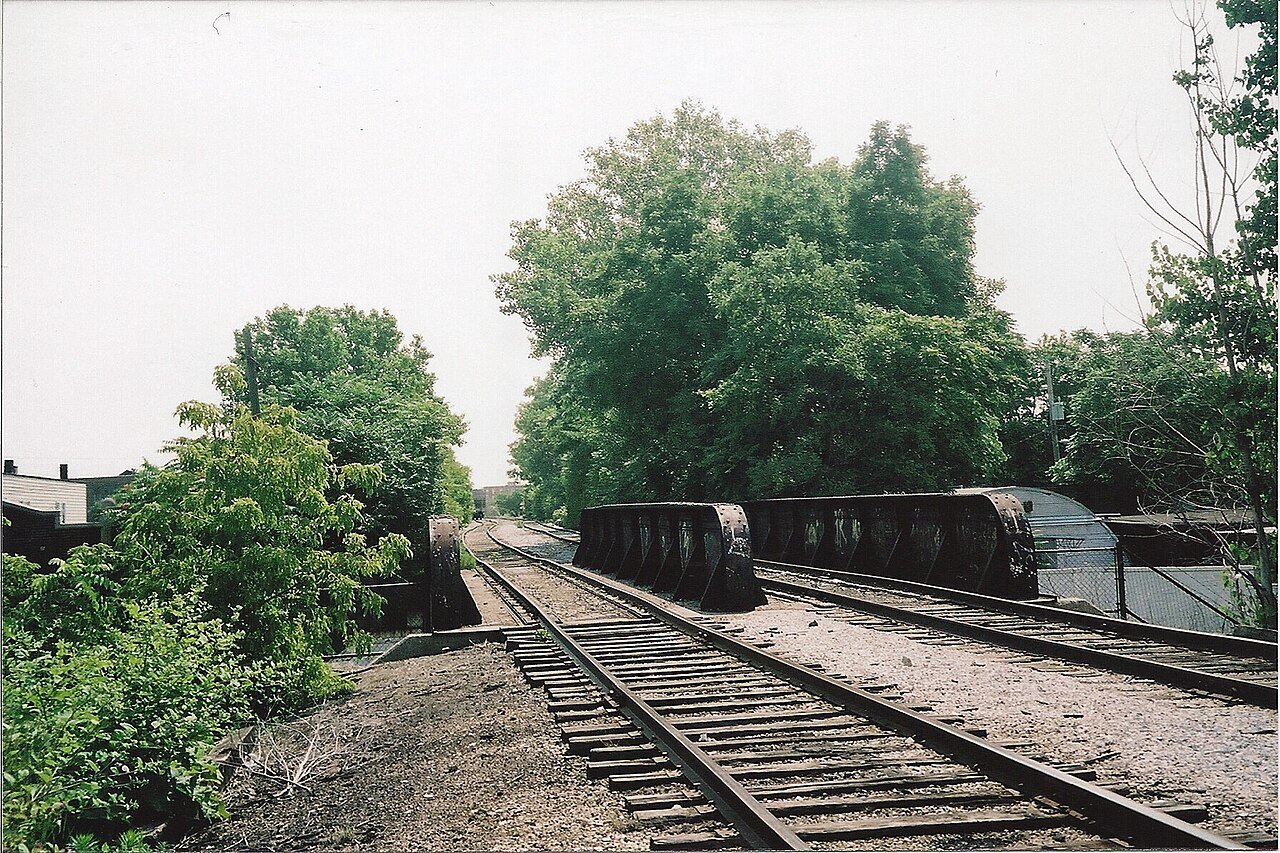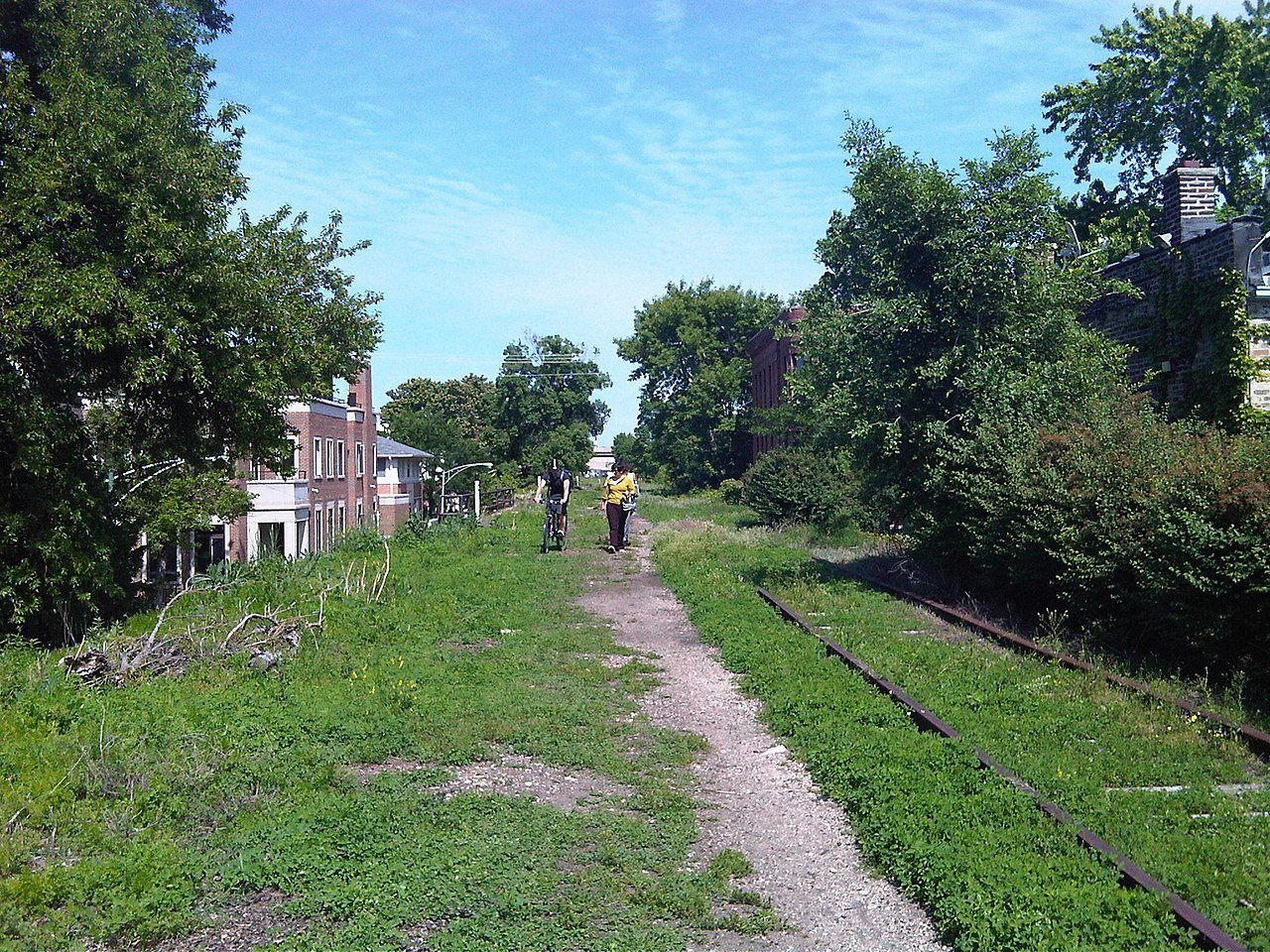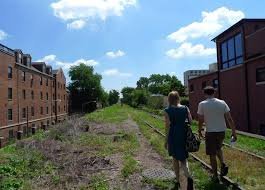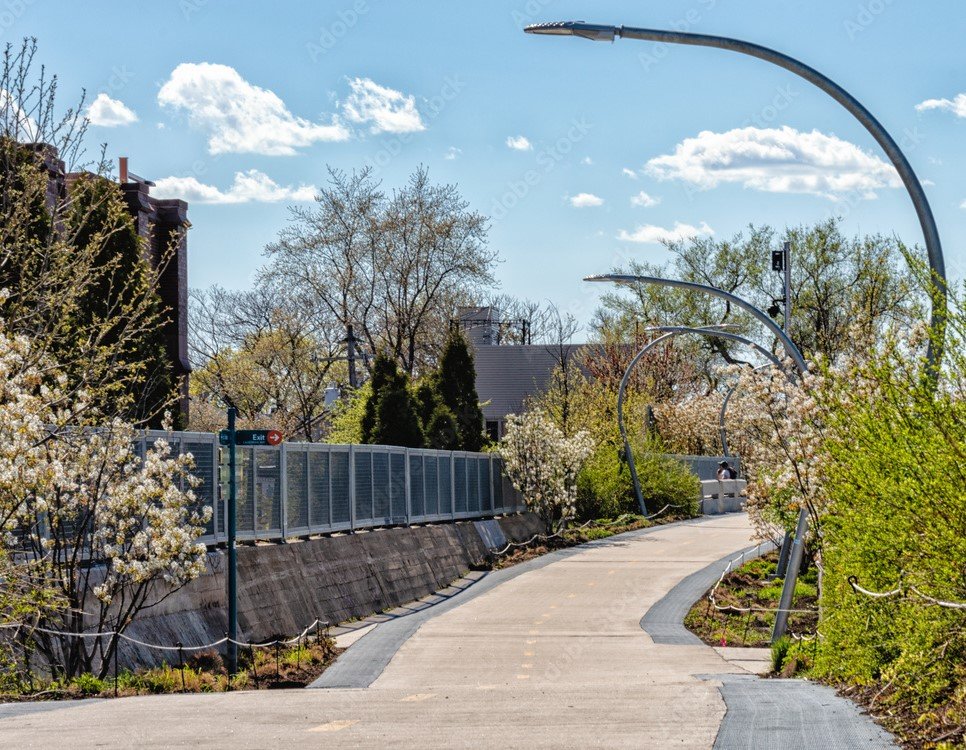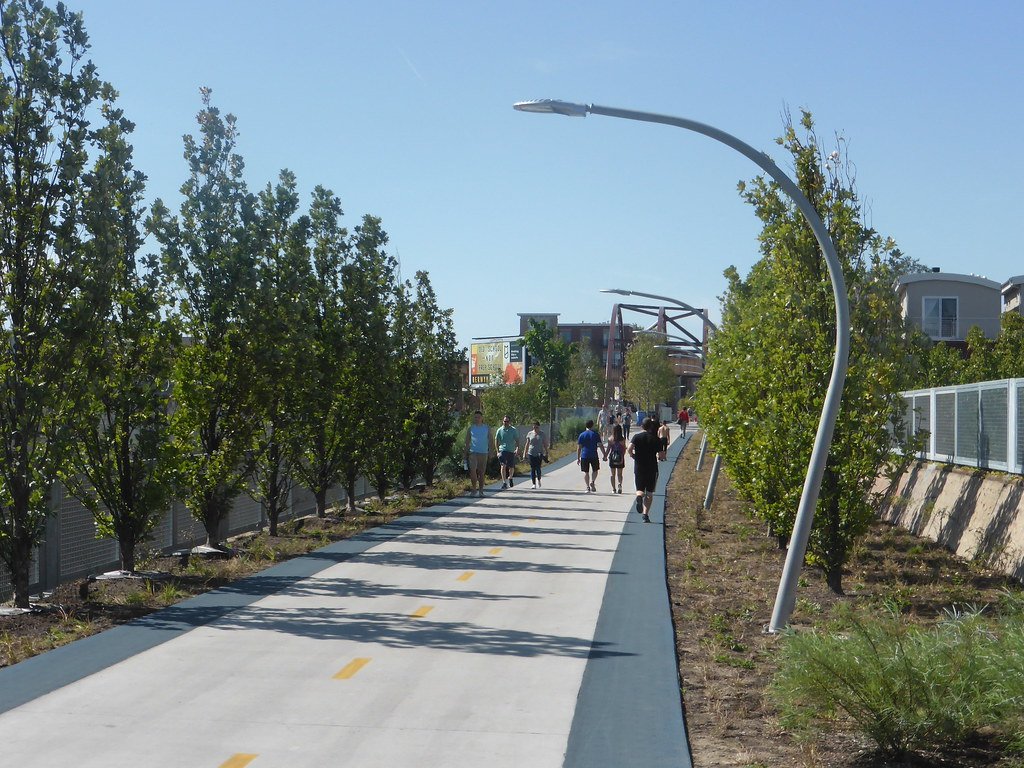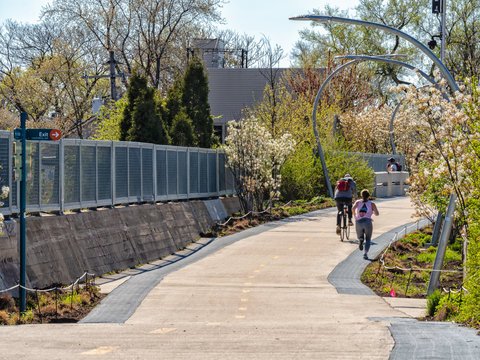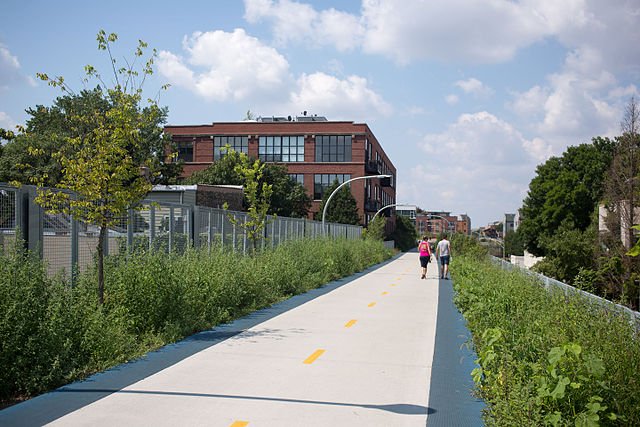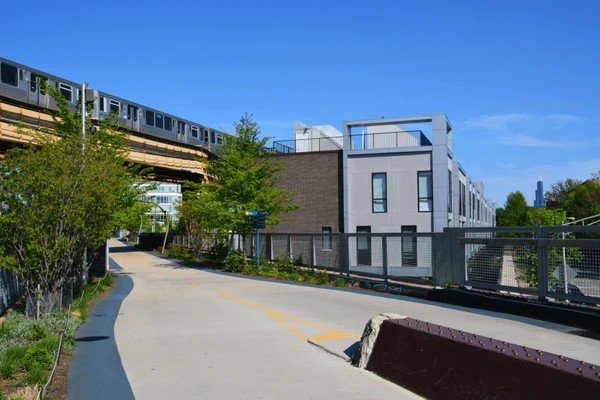Bloomingdale Trail - Northwest Chicago
Article Posted: March 29th, 2017
The story of The Bloomingdale Trail begins just after the Great Chicago Fire when the City Council gave permission for the Chicago & Pacific Railroad to lay tracks down the middle of Bloomingdale Avenue. The train tracks down the middle of Bloomingdale Avenue proved to be very dangerous with thousands across the city being injured or killed. Finally, in 1893, the City Council passed a law requiring all tracks to be elevated within 6 years. The Bloomingdale line was one of the last to be raised, with work finishing in 1915. That is how the embankment that would become the Bloomingdale Trail came to be.
The train line served a manufacturing district across the city’s Northwest Side. By the mid-1990’s the few trains that used the line were re-routed and freight service ceased completely. Trees grew up between the tracks, flowers bloomed and animals found new habitat. It was only a matter of time before the communities along the line rediscovered the space. Those who ventured up there in the late ‘90s and early 2000s found an impromptu nature trail with birds and surprising views of the City. This was the beginning of the Bloomingdale Trail. The Friends of the Bloomingdale Trail was formed, an advocacy organization who would champion the project for the next decade. What started as an old railroad right of way has become a 2.7 mile hiking and biking trail for outdoor enthusiasts on the North side of Chicago.
This is where Halloran & Yauch comes in. To keep the trail green and alive, the City decided to irrigate both sides of the entire 2.7 mile trail and all of the small parks attached to it. Halloran & Yauch put in over 5 miles of irrigation, using over 18 miles of pipe and 5000 sprinklers. Today, the Bloomingdale Trail is the standard for re-purposing train right of ways by creating an urban biking and hiking green space. Next time you are on the North side of Chicago, take a walk on the Bloomingdale Trail.
